The Maritime Museum is located in the building of Drassanes Reials de Barcelona , the royal arsenal of Barcelona, dedicated to shipbuilding between the thirteenth century and eighteenth century. The first mention of these arsenals date from 1243 in a document indicating the boundaries of the city of Barcelona where it mentions it shipyards and is near the Columbus Monument. When I was in the military museum there was a 3D map of the early military and government buildings in the area and I learned of the museum’s presence in the old shipyards.
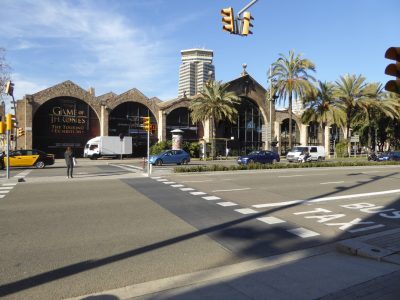
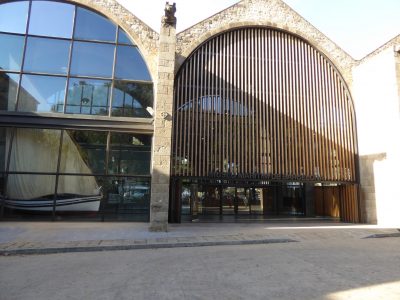
I could see this rowing shell from outside so began my visit checking it out. I used to row single shell on the Weweantic River, my backyard when I lived in Wareham, Ma and I wonder if this catamaran style would be better in rougher waters? Since the boat & rower sit higher, I bet it can get to some good speeds although might be effected by cross winds.
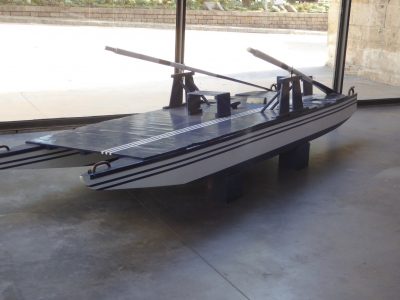
There was a touring GoT show in the next-door exhibit hall and this must have escaped. Haven’t seen the show so the exhibit would be lost on me.
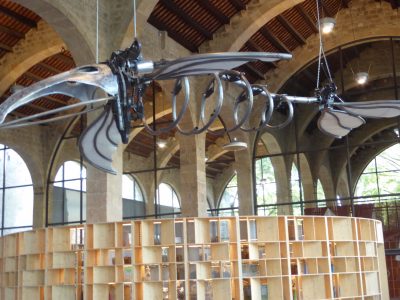
And maybe those that say Glasgow is full of crap might be on to something. I’m not of that camp, as I rather like the place, but one must wonder.
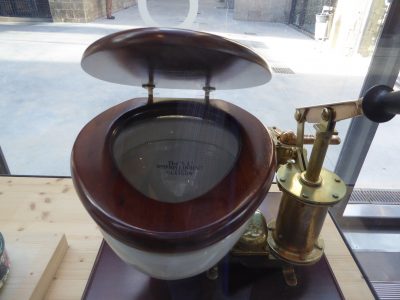
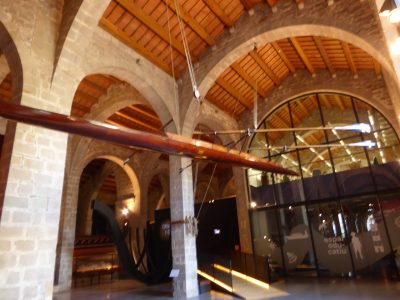
Lots of models. Like “The City of Paris” a frigate-rigged steamer
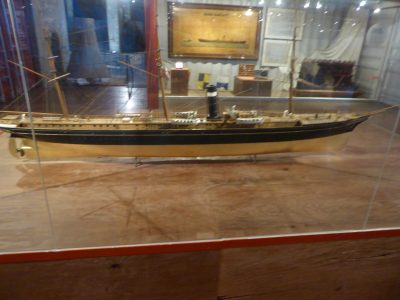
In the 15th century ‘xebecs’ were fast 3 masters that held up to 30 deck cannon and were often used by pirates in the Mediterranean. And also by those who pursued them.
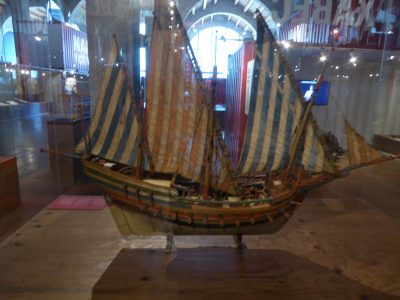
It was an American of Scottish decent, Malcom McLean, who invented the concept of shipping containers and so revolutionized the international transport industry as seen with the model of the “Pilar”.
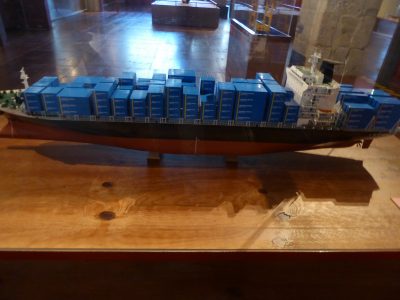
When coal was king it also was heavy. These squat haulers ran the coasts of Europe.
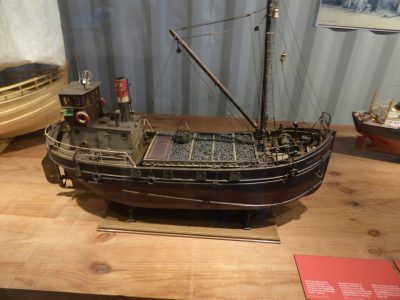
The model in the rear is designed to carry minerals whilst the one in the forefront, LNG
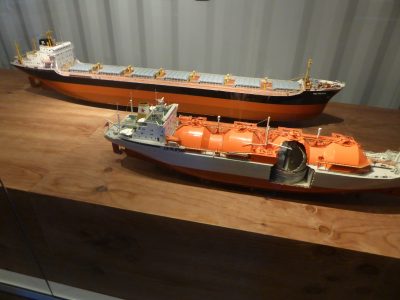
Make sure you do not miss the free video and the headsets as you walk the museum. I thought the video more informative than they usually are and the headsets are always a nice plus when they are location activated.
Little know fact but Magellan, hailed as first to circumnavigate the world in 1519, didn’t. He died along the way. The Victory, one of the 5 ships in Magellan’s fleet returned under the command of the Basque, Juan Sebastian Elcano and 18 men out of the 250 who began the journey, did return to Spain and with her proof that the world was not flat!
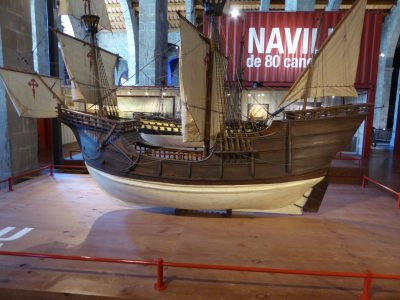
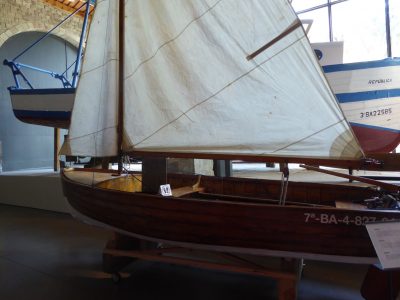
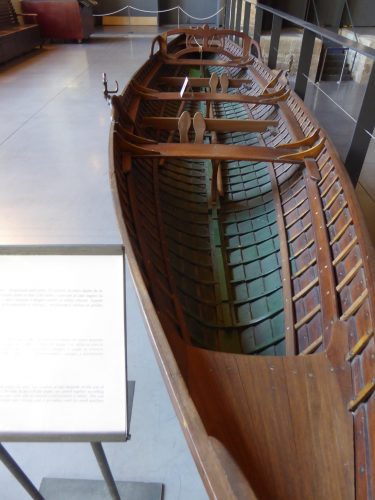
Another Cat.
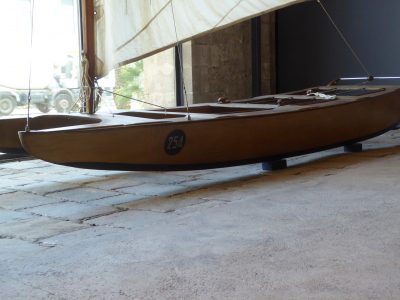
Now remembering that the original reason for these high arched buildings, it was not a surprise to see a replica of one of the galleys once made here in full form. But I was still stunned when up close. This is the replica of the Real, the flagship of Juan de Austria who fought with Islamic forces in the battle of Lepanto in 1571, and at the time the largest galley in the world.
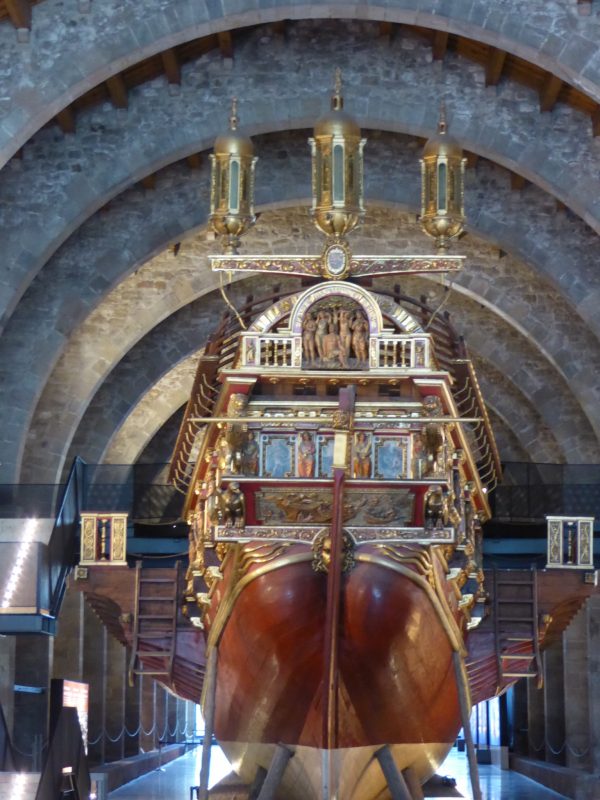
Built in 1740 this model of an 80 gun sip was built in Havana. Models such as these were used instead of paper plans or drawings. Eventually this model found itself in the New Bedford Whaling Museum and that museum gave it as a donation.
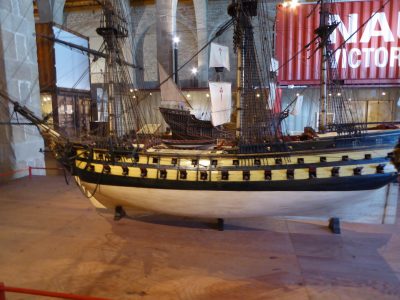
Depiction of the Battle of Lepanto
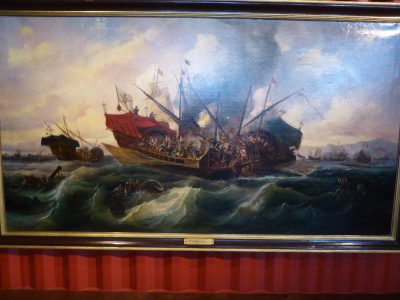
This model is of a ship that would carry both cargo & passengers
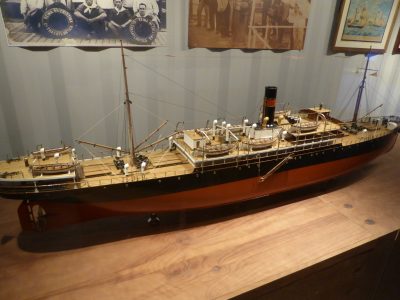
Model of the building I’m standing in
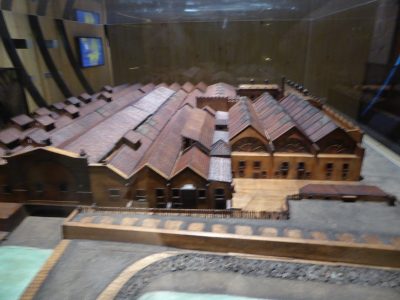
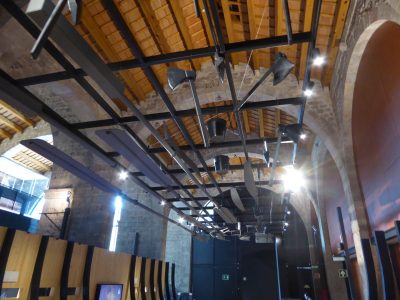
Some parts of the buildings date to the mid 1200’s
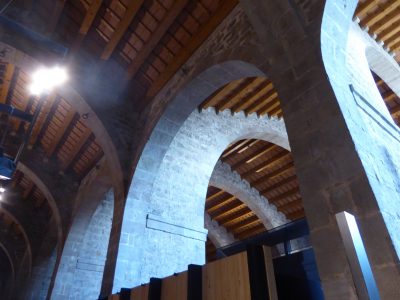
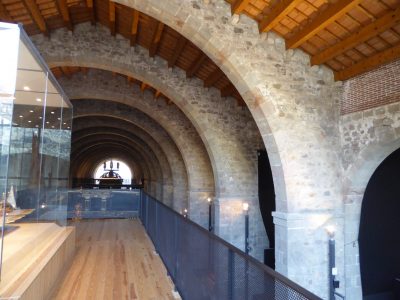
A model of the “Real”
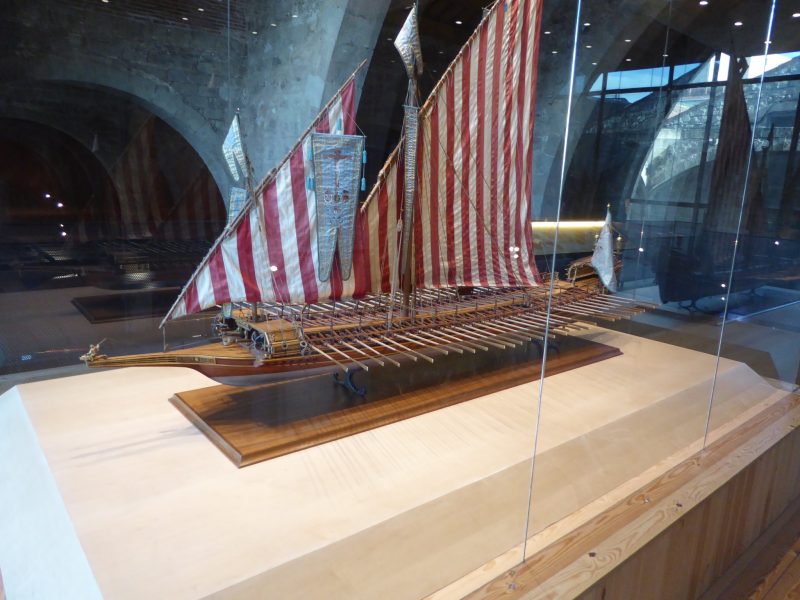
Straight down the bow.
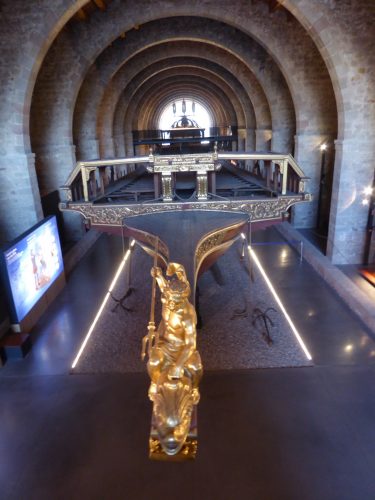
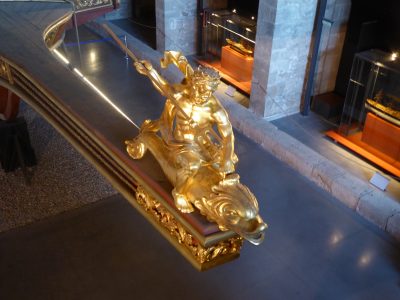
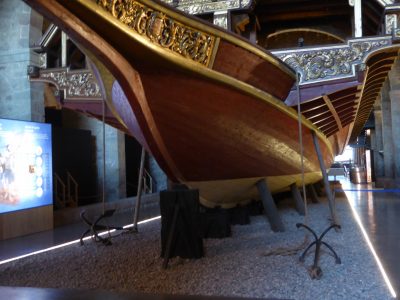
A cut-away gives a glimpse of the insides. No berths needed as those manning oars lived in their seats. They lived, slept, ate and shat chained in their seats. Ocean wash would clean away the waste washing it over bare, exposed feet and legs. Most would remain for as many months as they lasted until they were unceremoniously dumped over the side and some new prisoner took his place. If the boat sank, they would all die.
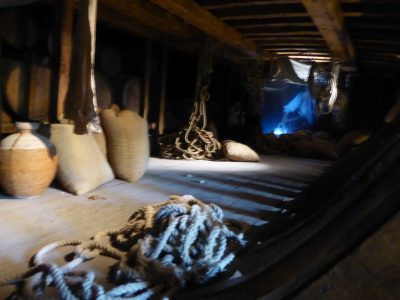
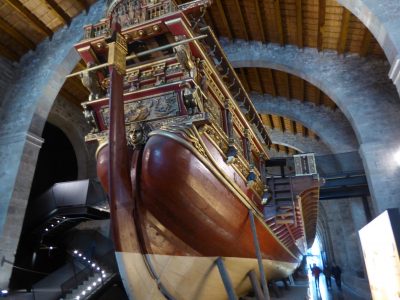
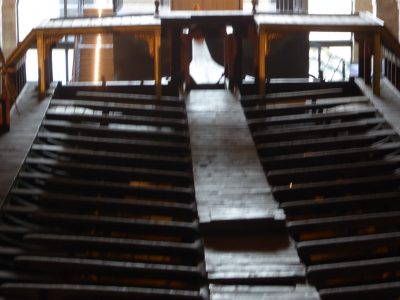
The aft cabin was a wee bit more comfy. Cushions, canopy and other luxuries would be applied.
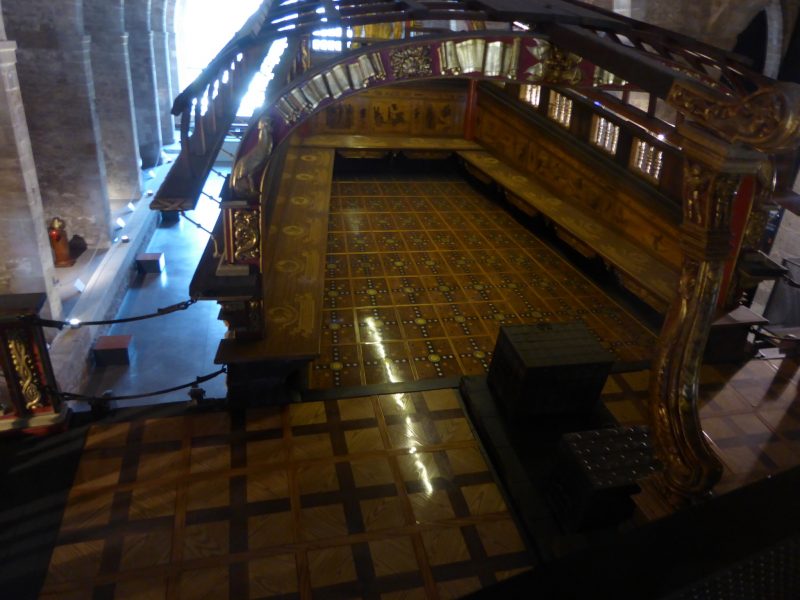
Outer hull art
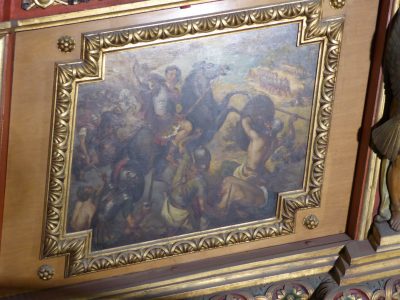
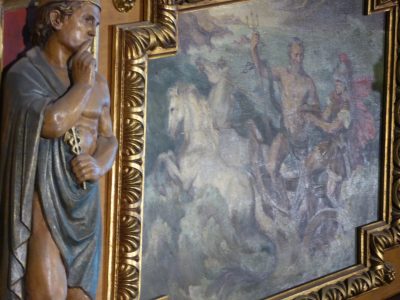
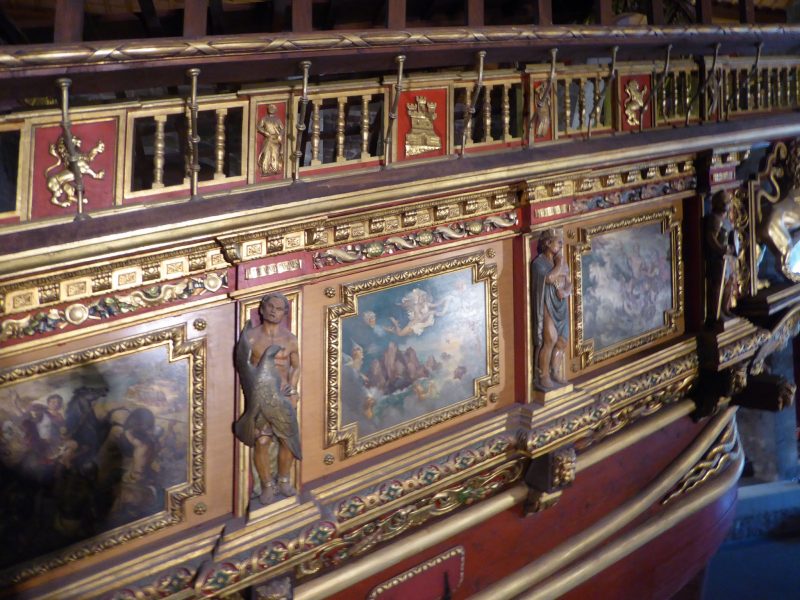
Tucked behind some shipping containers the Seagull
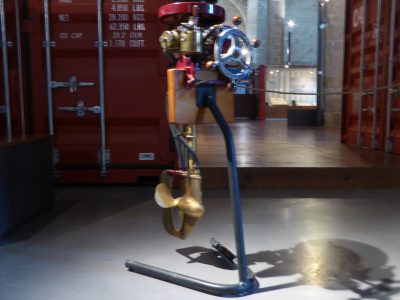
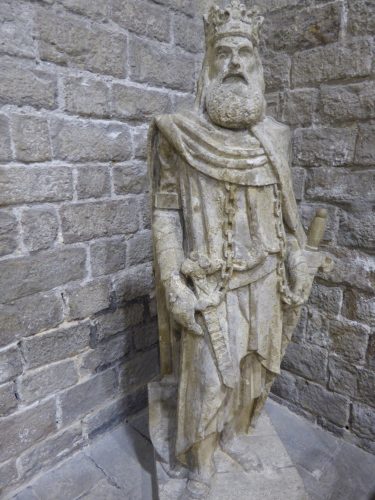
An Optimist, designed in 1954 by Californian Clark Mill, is the classic one-person saying dingy that found great success racing the waters of the Med.
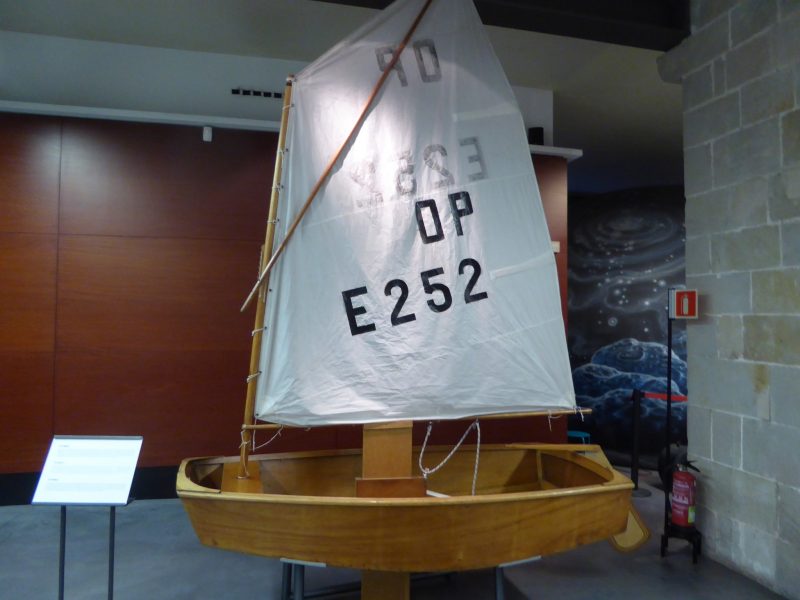
On 21 October 1805, Lord Admiral Nelson led the British against a combined French and Spanish fleet. Although it cost Britain the life of her greatest admiral, his victory secured complete naval superiority for Britain against Napoleon. It has been said that with this victory, Napoleon met his Waterloo but just did not know it yet.
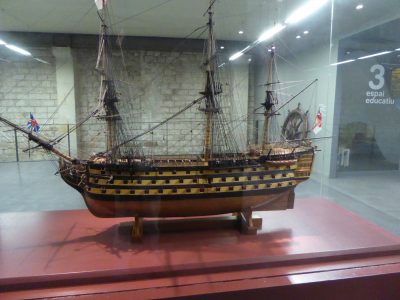
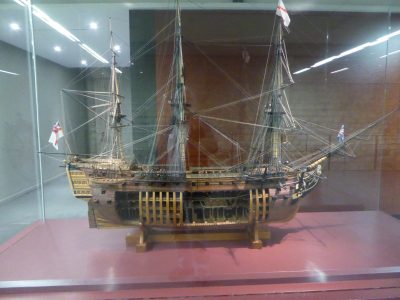
Near the exit, Raffaele Marino’s “Boy Fishing”
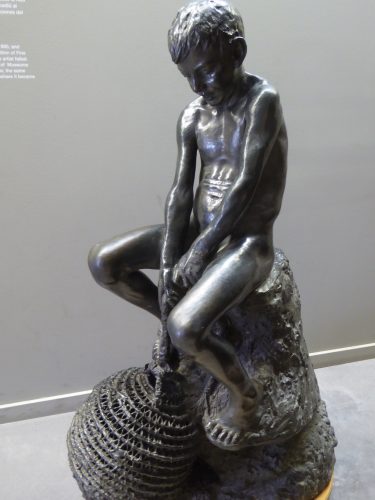
The museum’s courtyard sits by the restaurant and has a couple more pieces of interest from this crane to
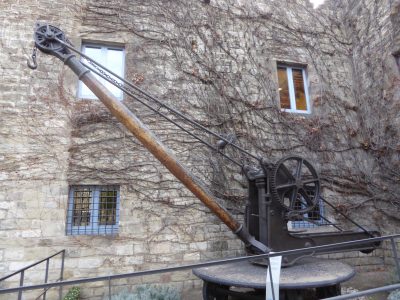
a wooden submarine, Ictineo I was built by Narcís Monturiol i Estarriol and launched in 1859. Google for an interesting story. Every poster uses the same one.
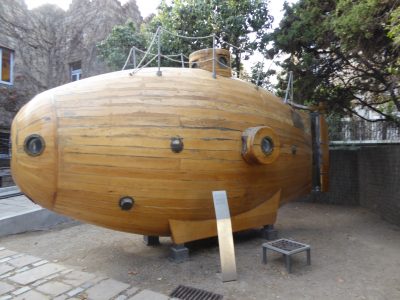
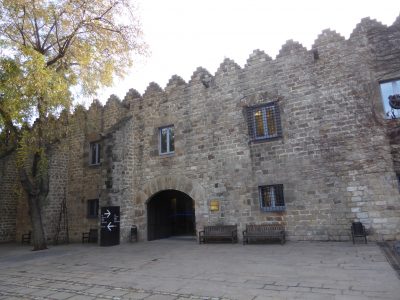
This is the bridge of the Sayremarl. I don’t know either.
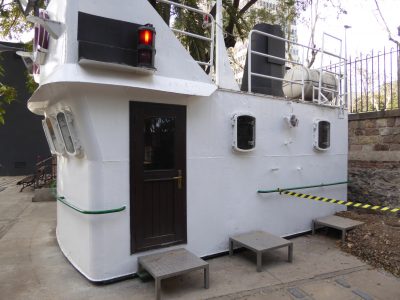
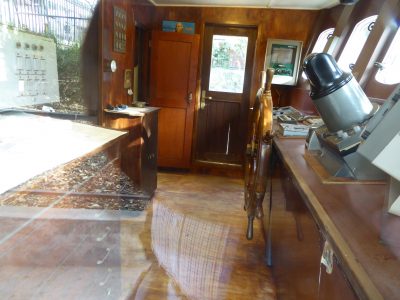
And sorry but there was no information regarding the boy with a sore foot
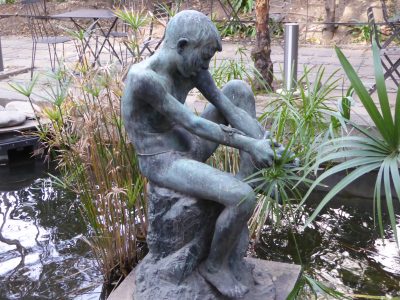
There are 7 species of parrots in Barcelona. The highest of any European city. They are not native but rather escapees that have flourished in the area due to an abundance of food and temperatures that, whilst colder than where they were from, are still fairly mild in the winter.

This appeared to be an azalea growing out of a crack in the ancient fortress wall

I believe this is the silk floss tree (Ceiba speciosa, with it’s uninviting bark


{ 0 comments… add one now }